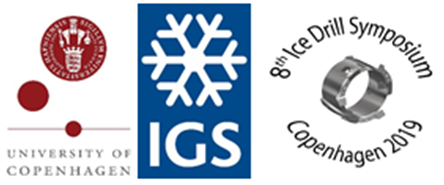Speaker
Description
Various thermal and electromechanical ice drills are suspended on armored cable that provide power to the downhole unit and transmit signals to the surface. As a general matter, steel wire armored cables are used. These cables have usually 4 to 7 conductors and outer diameter in the range of 4.5-9 mm. The weight of such cables is 0.09-0.35 kg/m and maximum bending radius (under tension)of the curve of the inner edge of the bends shall be at least 12 times the external diameter of the cable. To make cable lighter and more flexible, series of new Kevlar-armored cables were developed and tested. The cable consists of two 1.28 mm2 conductors that can be used as power and signal lines at the same time. All the conductors are isolated by polytetrafluoroethylene (PFA) jackets. The strength member is made from 0.65-mm diameter Kevlar lines that have either net or double-spiral pattern. To hold Kevlar lines in order, the outer layer of cable is produced from polyamide fabric cover net. Outer diameter of the different-type cables ranged from 5.7 to 6.2 mm. Permissible bending radius is as low as 17-20 mm. The maximal breaking force under straight tension is 16 kN while under bending tension with wheels 40 mm in diameter it reduced to 10.5 kN. Cables weigh only 0.055-0.065 kg/m. All cables were tested for mechanical and electrical properties. The first laboratory tests with prototype of RECoverable Autonomous Sonde RECAS-200at an ice-drill testing facility that can simulate drilling conditions as close as possible to the natural environment throughout the year are scheduled on the summer of 2019.

